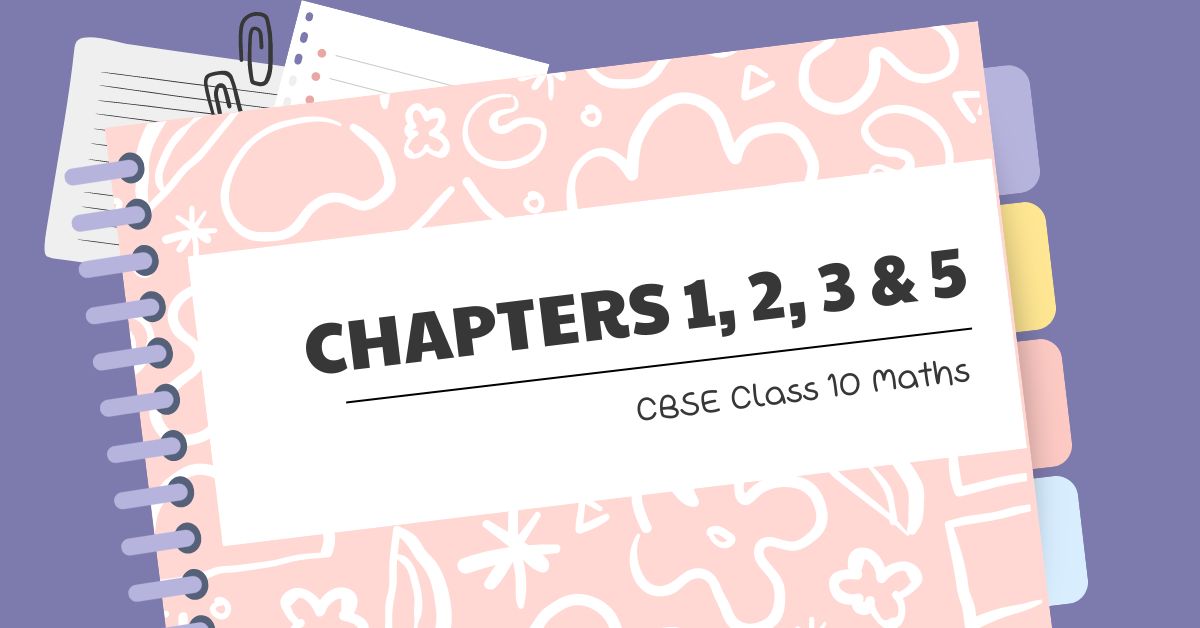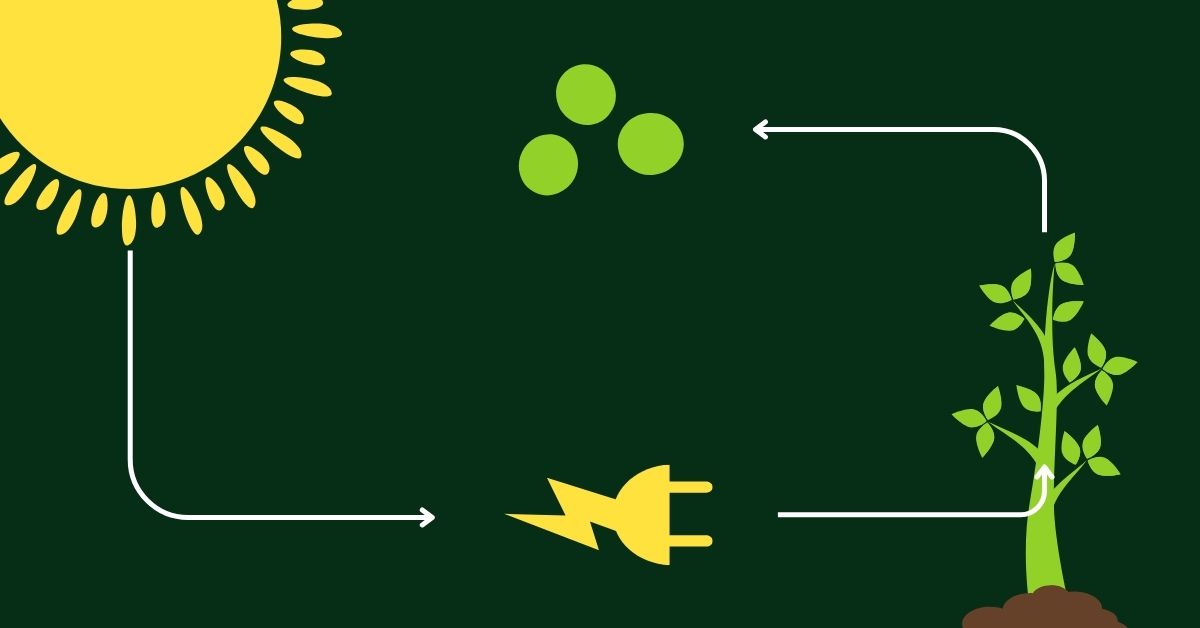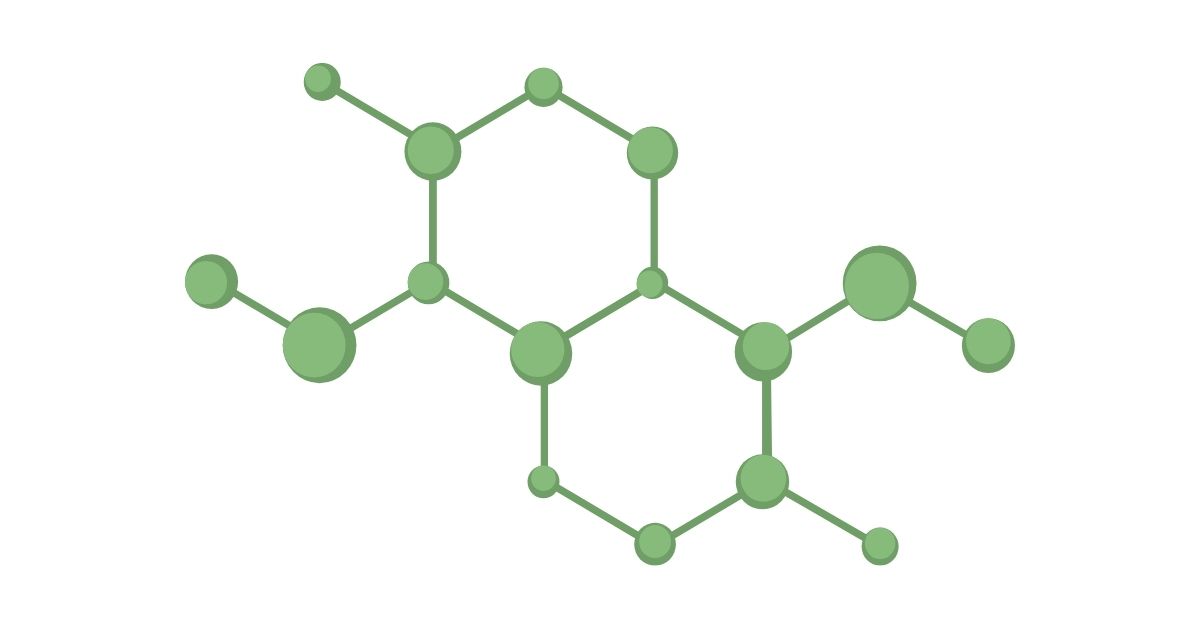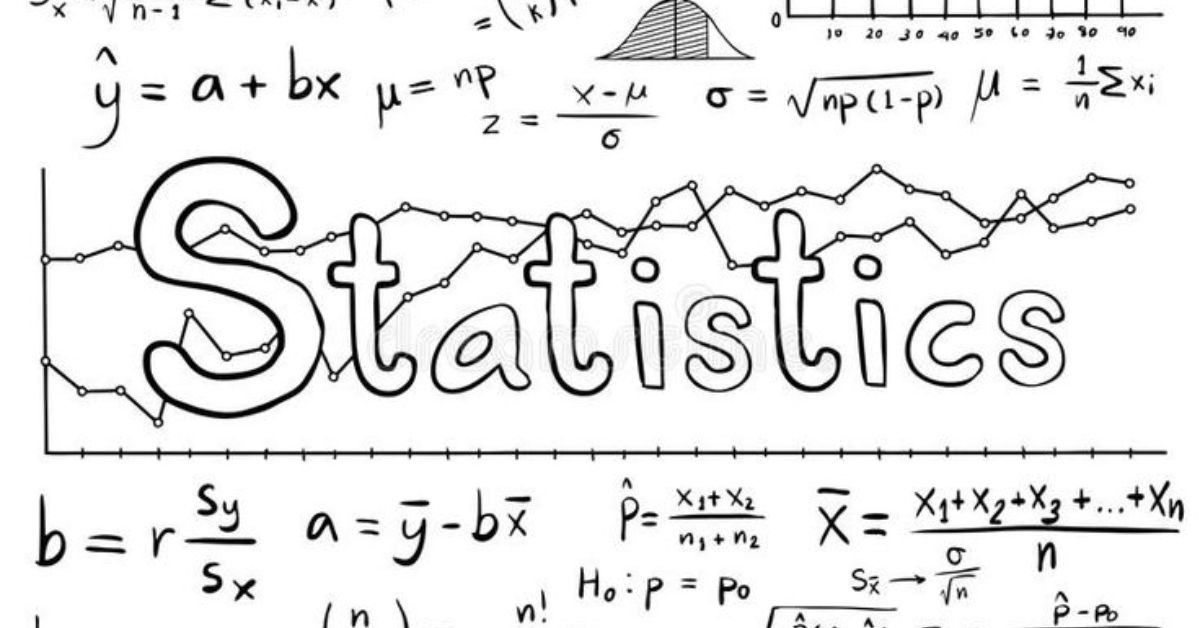This comprehensive guide tackles Chapters 1, 2, 3, and 5 of your CBSE Class 10 Maths syllabus, laying a solid foundation for your journey into the world of numbers and equations. We’ll delve into each subtopic with clear explanations, practice questions, and valuable tips to help you master these crucial concepts.
In this article:
Chapter 1: Real Numbers
- HCF (Highest Common Factor): The largest number that is a factor of two or more given numbers.
- Example: Find the HCF of 12 and 18.
- Explanation: List the factors of each number: 12 (1, 2, 3, 4, 6, 12) and 18 (1, 2, 3, 6, 9, 18). The HCF is 6.
- Example: Find the HCF of 12 and 18.
- LCM (Least Common Multiple): The smallest number that is a multiple of two or more given numbers.
- Example: Find the LCM of 8 and 12.
- Explanation: List the multiples of each number: 8 (8, 16, 24, …) and 12 (12, 24, 36, …). The LCM is 24.
- Example: Find the LCM of 8 and 12.
- Euclid’s Division Lemma: For any two positive integers a and b (a ≠ 0), there exist unique integers q (quotient) and r (remainder) such that a = bq + r, where 0 ≤ r < b.
- Explanation: This lemma basically states that when you divide one number by another, you get a quotient (the number of times the divisor goes into the dividend) and a remainder (what’s left after the division).
- Rational Numbers: Numbers that can be expressed as a fraction (p/q), where p and q are integers and q ≠ 0. (Examples: 1/2, -3/5, 0)
- Irrational Numbers: Numbers that cannot be expressed as a fraction. Their decimal representation is non-repeating and non-terminating. (Examples: √2, π)
- Factorization: Breaking down a number or polynomial into its constituent parts (prime factors for numbers, linear or quadratic expressions for polynomials).
Practice Questions (Chapter 1)
- Find the HCF and LCM of 24 and 36.
- Use Euclid’s division lemma to find the quotient and remainder when 53 is divided by 7.
- Classify the following numbers as rational or irrational: √9, 5/7, π.
Chapter 2: Polynomials
- Polynomials: Expressions consisting of variables (represented by letters like x, y, z) and coefficients (numerical constants), combined using addition, subtraction, and multiplication. (Examples: x² + 3x – 4, 2y, 5)
- Basic Operations: Addition, subtraction, multiplication of polynomials following the order of operations (PEMDAS).
- Factorization: Breaking down polynomials into simpler expressions. We’ll focus on factoring by grouping and using identities like a² – b² = (a + b)(a – b).
- Example: Factorize x² + 5x + 6.
- Explanation: This can be factored by grouping. We need to find two numbers that add up to 5 and multiply to 6. (2 and 3 fit the criteria). The expression becomes (x + 2)(x + 3).
- Example: Factorize x² + 5x + 6.
Zeroes of a Polynomial: The values of the variable (x) for which the polynomial becomes zero. You can find them by setting the polynomial equal to zero and solving the resulting equation.
Practice Questions (Chapter 2)
- Add the polynomials: 2x² + 3x – 1 and x² – 2x + 5.
- Factorize the polynomial: x² – 7x + 12.
- Find the zeroes of the polynomial: 3x² – 5x + 2.
Chapter 3: Pair of Linear Equations in Two Variables
- Linear Equations: Equations where the highest power of the variable (usually x) is 1. They can be represented in the form of ax + by = c (where a, b, and c are constants).
- Solving Linear Equations in Two Variables: Finding the values of x and y that satisfy both equations in a system of two linear equations. We’ll explore three methods: elimination, substitution, Graphical
- Elimination: This method involves eliminating one of the variables by adding or subtracting the equations strategically to cancel it out.
- Substitution: This method involves solving one equation for one variable and substituting that expression into the other equation to solve for the remaining variable.
- Graphical Method: This method involves plotting both equations on a graph and finding the point of intersection, which represents the solution (values of x and y that satisfy both equations).
Practice Questions (Chapter 3)
- Solve the system of equations: x + y = 7 and 2x – y = 3 (using elimination or substitution).
- Graph the equations: y = 2x + 1 and y = x – 3. Find the point of intersection.
Chapter 5: Arithmetic Progressions (AP)
- Arithmetic Progression (AP): A sequence of numbers where each term is obtained by adding a constant value (common difference) to the preceding term.
- Example: 2, 5, 8, 11, … (common difference = 3).
- Terms of an AP: The nth term of an AP can be found using the formula: tn = a + (n – 1)d, where tn is the nth term, a is the first term, d is the common difference, and n is the term number.
Sum of an AP: The sum of n terms of an AP can be found using the formula: Sn = n/2 (a + l), where Sn is the sum of n terms, a is the first term, and l is the last term
Tips for Mastering These Topics
- Focus on understanding the concepts before memorizing formulas.
- Practice regularly with a variety of problems to improve your problem-solving skills.
- Learn different methods for solving linear equations (elimination, substitution, graphical) and choose the one that works best for you in a particular situation.
- Pay attention to signs while adding or subtracting equations.
- Draw diagrams when using the graphical method.
- Visualize the concept of an AP by writing out the first few terms.
- Substitute values into the formulas to find the required terms or sums.
Previous Year Questions
2023:
- Solve the system of equations: 3x + 2y = 11 and x – y = 2 (using elimination or substitution).
2022:
- The sum of three consecutive terms of an AP is 12. Find the terms.
2021:
- In an AP, the 7th term is 36 and the 13th term is 62. Find the first term and the common difference.
By following these tips and practicing consistently, you’ll be well-equipped to tackle these fundamental chapters in your CBSE Class 10 Maths exam!







